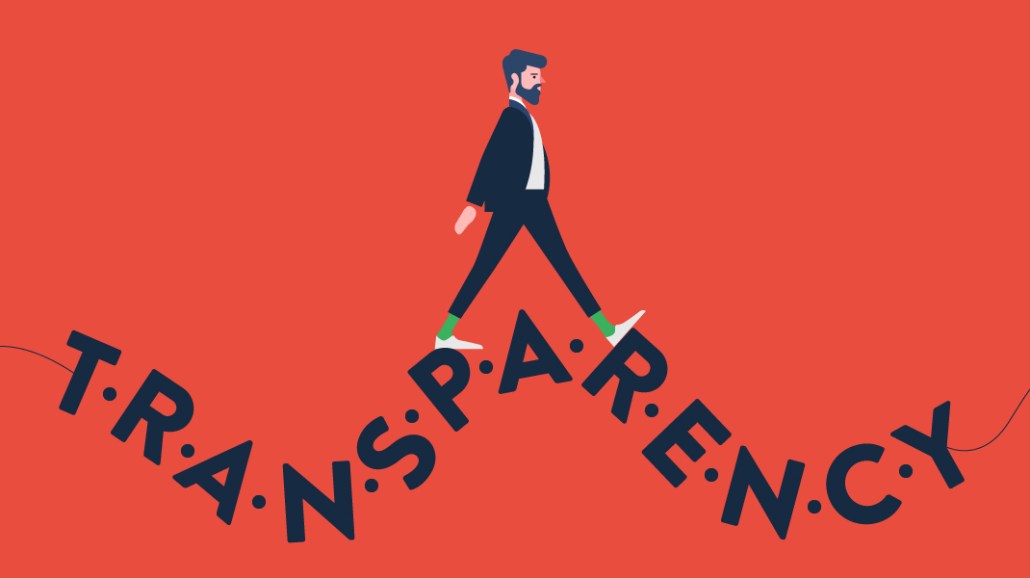‘We’re walking the walk’: Advertisers put transparency on the top of their 2018 to-do lists

Advertisers, impatient with the rest of the supply chain’s slow attempts to become more transparent, are taking matters into their own hands.
Marketers talked a lot in 2017 about wanting to know exactly what ads they buy in the murky world of online advertising, yet too few were able to find out. Now, the buy side has become more demanding after much soul-searching over the last year, said Matt Green, the World Federation of Advertisers’ global lead for media and digital marketing.
There were short-lived boycotts of the largest media channels. Marketers openly criticized the quality of online media, and advertisers walked away from big agencies and questionable ad tech. There was a lot of confusion about how things got so bad that marketers didn’t know what they were buying online. As much as those flashpoints shed light on advertising’s transparency issue, they also highlighted that the necessary changes to the supply chain weren’t happening as quickly as advertisers would’ve liked. The same problems that dominated the discussion at the start of the year, like brand safety, re-emerged in the final months of the year. Now, advertisers are coming up with their own solutions.
“We don’t like to ‘talk the talk,’ but rather ‘walk the walk’ when it comes to full transparency,” said Aaron Smolick, executive director of paid media analytics and optimization at JPMorgan Chase. Smolick explained why the bank built its own algorithm to keep its ads away from questionable content on YouTube just months after it — among a raft of advertisers — pulled ads from the video site last March amid the brand-safety scandal.
The bank’s algorithm, developed internally by its programmatic and media-buying teams, plugs into YouTube’s application programming interface and uses 17 filters, including video count and topic, to sort safe channels to host its ads. Having that insight at their fingertips means the bank’s marketers are pulling away from the long tail of content on YouTube. After sifting through 5 million YouTube channels since October, JPMorgan Chase now runs its ads on around 3,000 channels that its algorithm deems safe, as reported by Business Insider.
What is deemed appropriate for one advertiser “might not be suitable for the next in line,” said Smolick. Chase is a “very cautious brand,” he added, so “we felt the customization we used in the program had to include stricter levels of acceptance for channels we advertise on. We also are monitoring scale and cost to ensure the balance is in line with our business goals.”
Like brand safety, advertisers are also trying to do more to tackle ad tech’s issues — at least the strategy part. A recent survey of 149 marketers from the Association of National Advertisers revealed more than a third would reduce the amount of programmatic work they outsource to agencies due to having a greater knowledge of how media is traded. One of those advertisers is online gaming company Betsson Group.
Betsson Group took matters into its own hands last year with the appointment of Adform as its demand-side platform. In November, Betsson Group made its agency trade on Adform’s DSP, which it owns the contract to, to see whether the agency had been marking up prices via its own DSP to drive the agency’s own revenue and margin. By forcing the agency to use Adform, where the advertiser can see exactly what bids are occurring and for what price, the DSP would instantly show where the agency had previously been inflating prices or disguising subpar inventory as better inventory.
Uncovering those hidden costs isn’t the only benefit to Betsson Group. Like L’Oréal, Deutsche Telekom and Adidas, the online gaming business wants a programmatic strategy that ensures money is only spent on effective media.
Betsson Group is among a number of advertisers that will attempt to exert their influence over the broader ecosystem during the next 12 months after a 2017 that saw many focus on overhauling how they worked with agencies, according to Green. If 2017 was a year for getting disclosed media-trading deals in place and setting up the right arrangements with programmatic partners, then the next 12 months will see marketers drive greater adoption of ads.txt across their own partners as well as push online media’s walled gardens to give them more access to data, he added.
Diageo has already refused to spend on two of those walled gardens — YouTube and Snapchat — for fear of endangering the so-called trusted marketplace it spent the bulk of 2017 establishing.
The alcohol advertiser declined to comment on its digital strategy, but two sources who work with its marketing teams said its marketers are more accountable now than ever. That’s due to the advertiser’s trusted marketplace, which requires all bought media to conform to strict standards: Ads must be 70 percent in view; partners must have transparent pricing models and allow for independent verification of all their media; media owners must ensure that only users over the legal purchase age should see alcohol ads; media owners must employ robust brand protection tools; and sites must demonstrate a zero tolerance of ad fraud.
More in Media

Digiday+ Research: Publishers’ growing focus on video doesn’t translate to social platforms
Major publishers have made recent investments in vertical video, but that shift is not carrying over to social media platforms.

Technology x humanity: A conversation with Dayforce’s Amy Capellanti-Wolf
Capellanti-Wolf shared insight on everything from navigating AI adoption and combating burnout to rethinking talent strategies.

How The Arena Group is rewriting its commercial playbook for the zero-click era
The company is testing AI-powered content recommendation models to keep readers moving through its network of sites and, in doing so, bump up revenue per session – its core performance metric.





